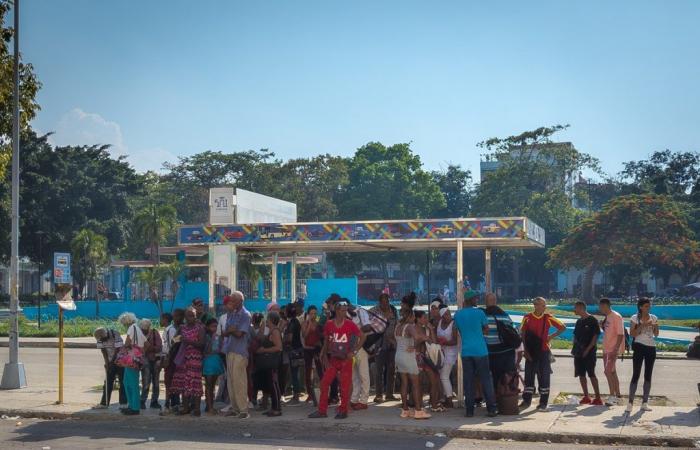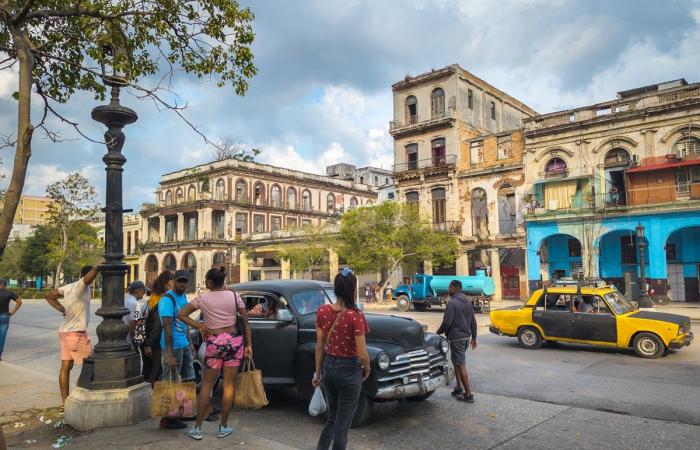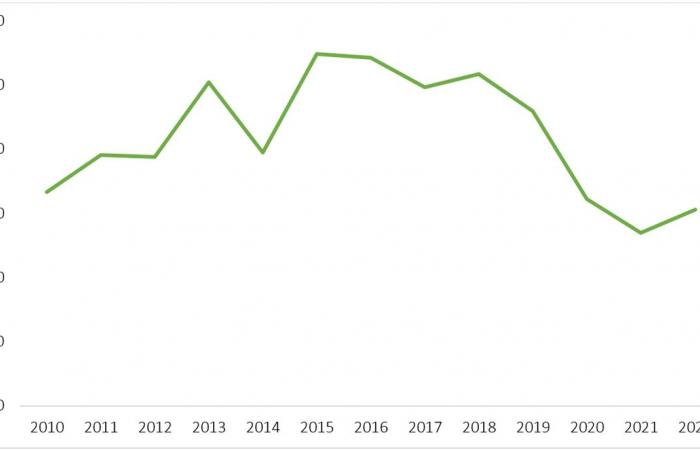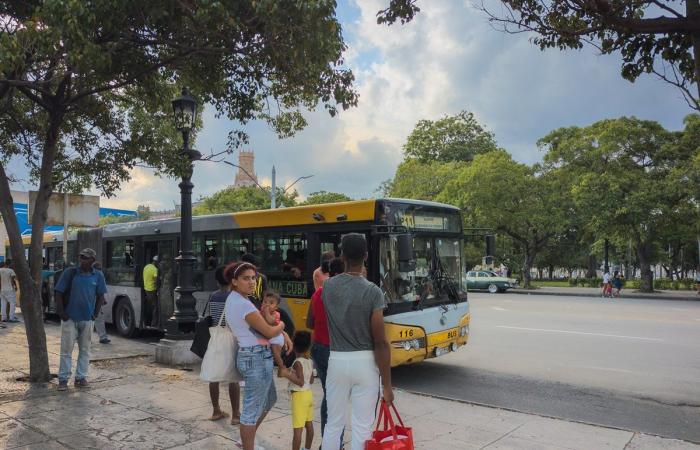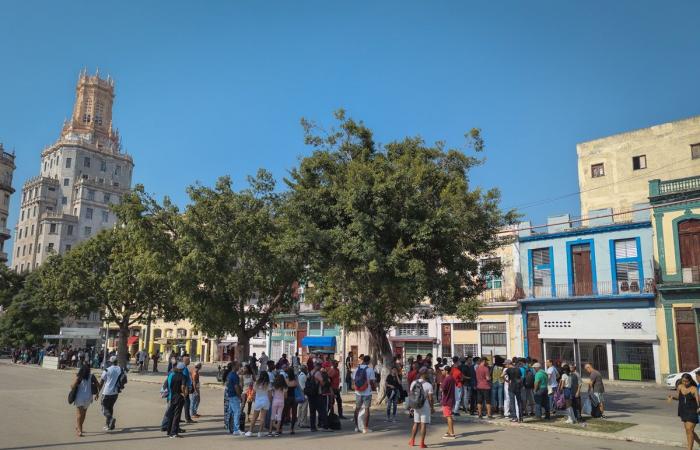From 2010 to 2022, Cuba spent 27,386 million US dollars (USD) on the import of machinery and transportation equipment, according to data from the National Office of Statistics and Information (ONEI). Currently, the country manages to transport 50% fewer passengers than five years ago.
On the podcast From the Presidencycorresponding to April 18 of this year, the Minister of Transportation, Eduardo Rodríguez Dávila, stated that the Island was in one of the worst moments in recent years.
Neighborhood Journalism answers several essential questions to understand the state of the sector.
What are the main problems that transportation presents?
Many towns in the country do not have state transportation routes (Photo: Periodismo de Barrio).
Half of the country’s state routes do not have stable operation due to a shortage of spare parts and fuel supply; This has resulted in many locations being covered only by private transporters, explained the minister.
At the same time, state vehicles, which are required to stop at stops, sometimes do not comply with the stipulations, despite the imposition of sanctions.
In the case of Havana, by 2023, of the 894 buses of the Provincial Transportation Company, only 34% were active.
According to Rodríguez Dávila, there are four main problems that influence the current situation: the availability of foreign currency, the costs of the service are not covered by income, the bureaucracy in decision-making and resource allocation, in addition to the differences in the form of economic operation between the state and non-state sectors.
Regarding the first, although transportation is one of the activities that generates the most income, most of the profits must be allocated to other priorities, instead of reinvesting them, due to the economic situation of the Island.
Thus, the different branches of the sector do not have fuel to provide service and lack a stable supply of spare parts, batteries, lubricants and tires. At the same time, a large part of the necessary products have to be imported because there is no technology to produce them and even those that can be manufactured in the national territory require raw materials that must be purchased abroad.
Although periodic investments are made in the acquisition of means of transportation, the main limitation lies in the lack of foreign currency to ensure the repair and maintenance of components.
Rodríguez Dávila emphasized that the sector requires 49 million USD annually only for maintenance, however, since 2016, imports of machinery and transport equipment have been reduced to reach a minimum value of 1,349 million USD in 2021, according to the ONEI. . In turn, total spending on purchases from abroad from 2010 to 2022 decreased by USD 135 million.
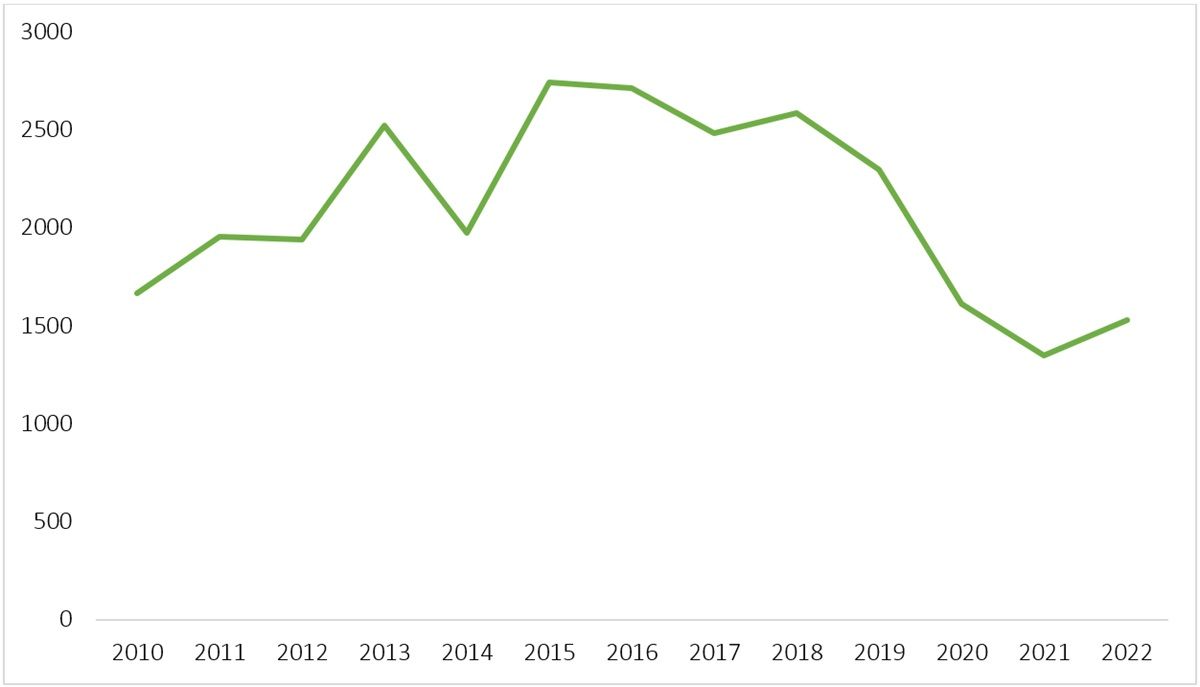
Value of imports of machinery and transport equipment from 2010 to 2022, in millions of USD (Source: Own elaboration with data from the ONEI).
Consequently, the park utilization coefficient was reduced by more than 20% in the case of buses, 9% in train cars, and almost 10% in automotive freight transportation from 2018 to 2022.
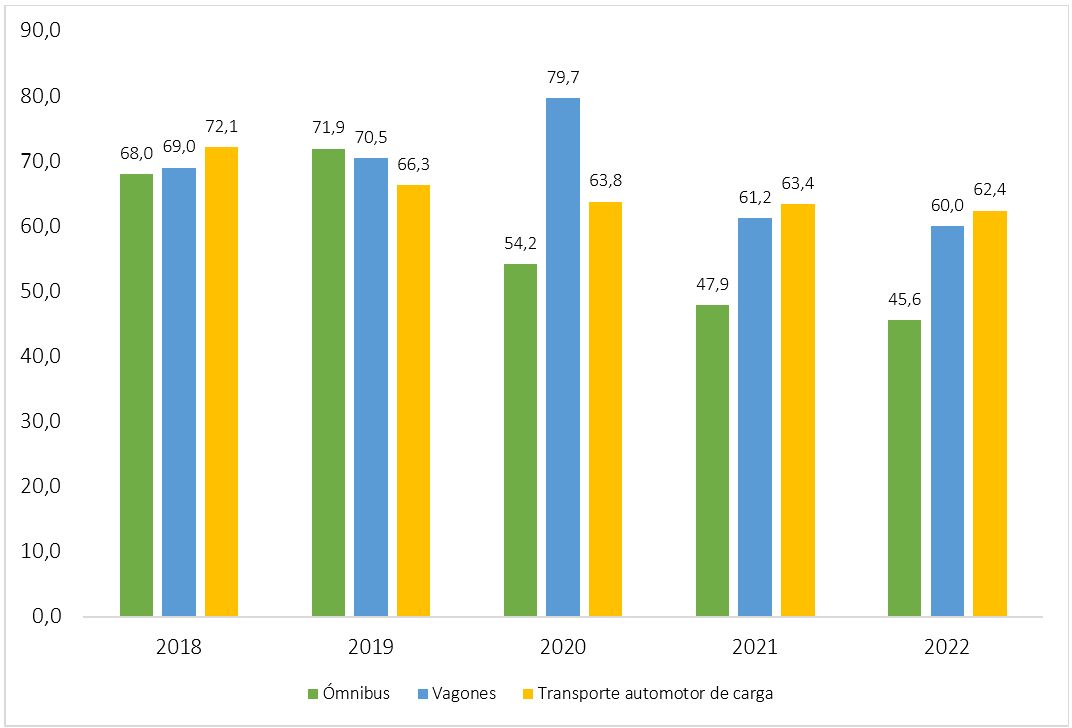
Park utilization coefficient, in percentage of the total (Source: Own elaboration with data from the ONEI).
For its part, the second problem that affects transportation is that the costs of the service are not covered by income, nor by the contributions made to the sector by the State budget. In state transportation, rates are set centrally and increasing prices is avoided so as not to affect the population, the minister explained. Due to this, many companies report losses and do not have the capacity to carry out maintenance on the units used.
Regarding bureaucracy in decision-making, the obstacles focus on the process that must be carried out for the allocation of resources, in which the country acquires the necessary materials in foreign currency abroad and markets them internally in national currency, through administrative mechanisms that slow down the arrival of resources to their destination.
With respect to the differences in the form of economic operation between the state and non-state sectors, the difficulty lies in the way each establishes its prices.
How are transportation prices set?
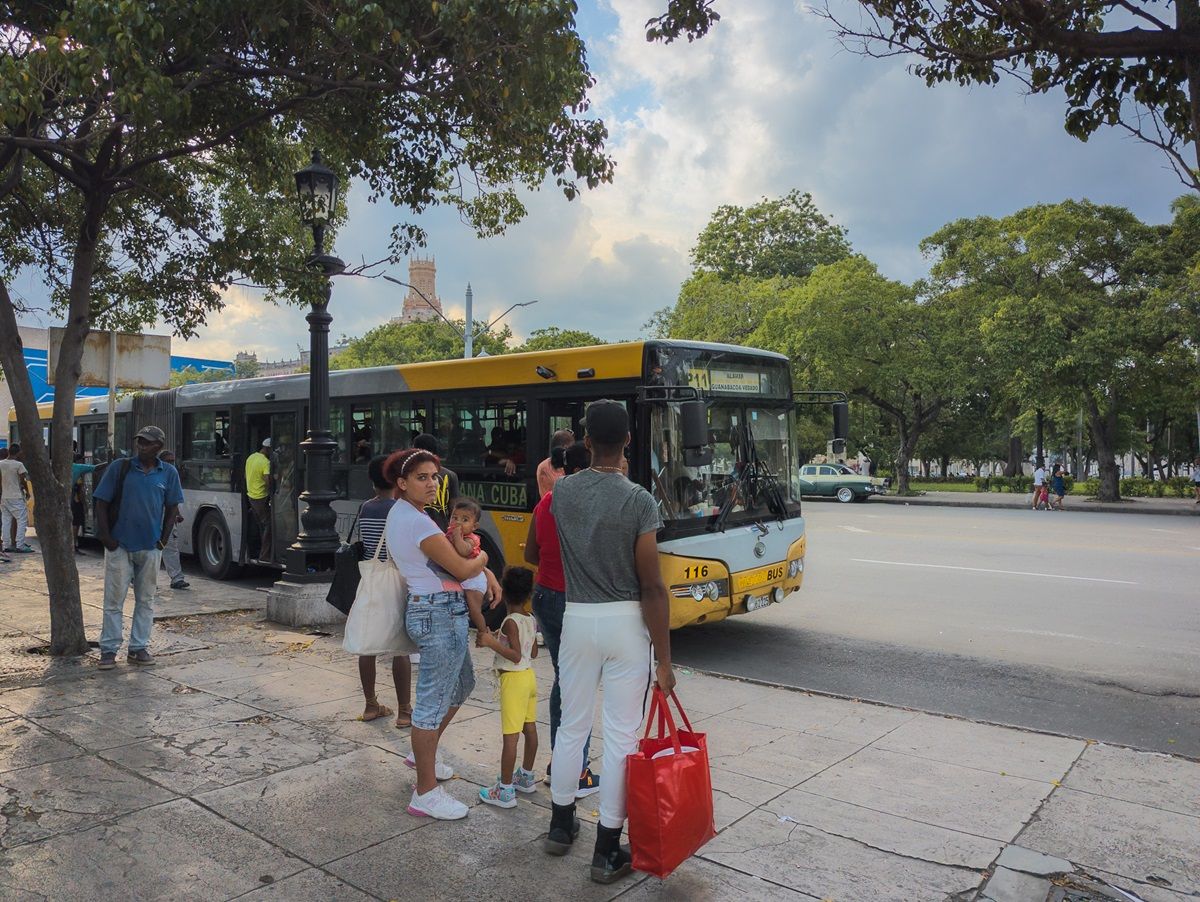
The salaries of private transporters are higher than those of state companies (Photo: Periodismo de Barrio).
Rodríguez Dávila argues that there are three components in the transportation cost structure: maintenance, fuel and personnel income. In the state sector, the parts and components necessary for maintenance are acquired in dollars by the country, which then sells them to transportation companies at an exchange rate of 24 Cuban pesos (CUP).
Likewise, these companies receive fuel through allocations that, despite having limitations, are paid at a wholesale price. As for salaries, in state companies they are kept low in order to avoid passing on this increase in rates to the population.
In contrast, private transporters acquire spare parts and parts in a market where there is no option to buy the dollar at 24 CUP. These expenses represent approximately 30% of the cost of the tickets, while the acquisition of fuel constitutes between 20% and 25%.
Although the minister mentions that there is a desire for this sector to also acquire fuel at wholesale prices, the scarcity of energy resources has limited its implementation. In many places, obtaining it depends on resellers and the price can be up to 10 times higher.
For their part, the salaries of private transporters are higher than those of state companies, which also contributes to higher prices.
What actions are contemplated to resolve these problems?
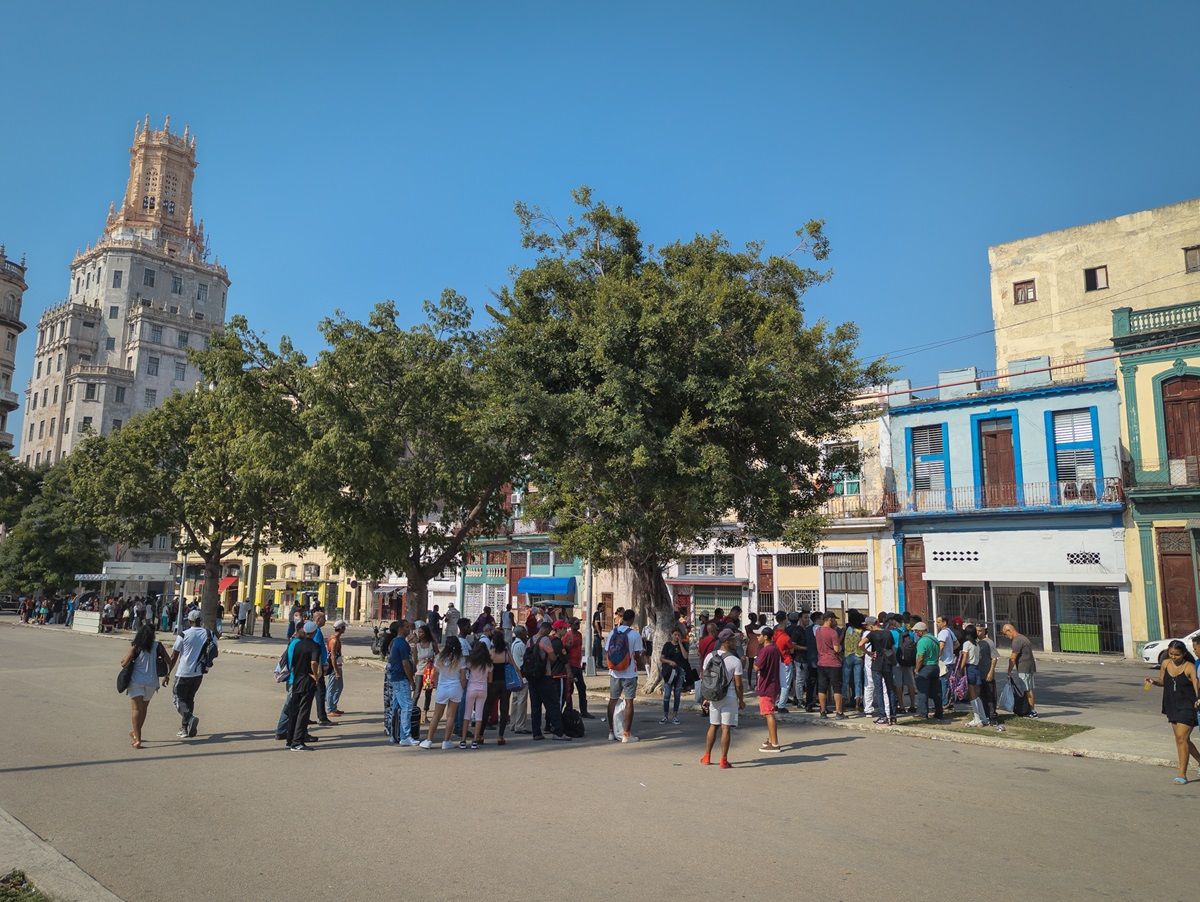
One of the projections is the use of renewable energy in transportation (Photo: Periodismo de Barrio).
Among the measures that have been evaluated are the incorporation of tolls at some points to raise funds to allow the repair of roads and investment in infrastructure; the inclusion of private transporters in the benefits that state companies receive in terms of the acquisition of fuel and spare parts, through the creation of a wholesale market.
One of the areas currently being worked on is the modernization of the sector for the use of renewable energies through funds with low interest rates, as well as a payment system that can be made in the long term for investment in electric buses and charging stations with photovoltaic panels. Opportunities for international cooperation are also explored, which, Rodríguez Dávila points out, have not been well taken advantage of due to lack of experience.
At the same time, the country has 22 projects aimed at attracting foreign investment to the sector, for a total value of more than 212 million USD.
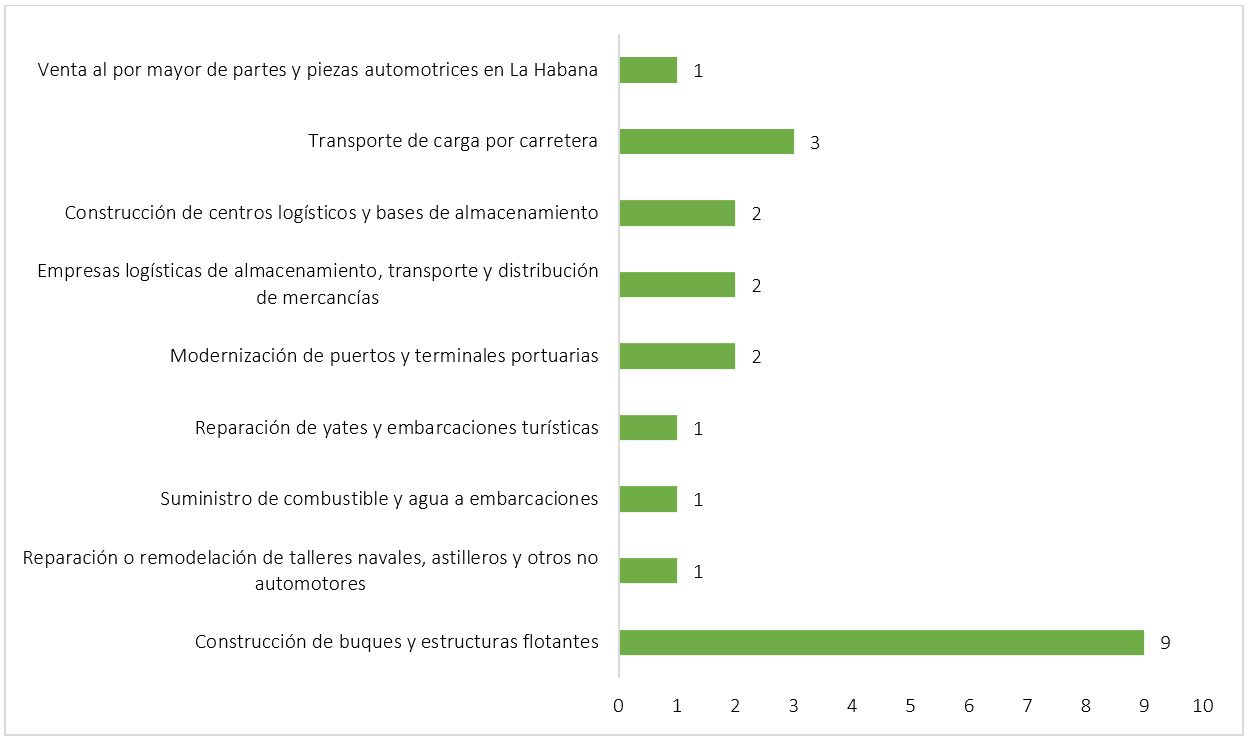
Foreign investment opportunities for transportation, in number of projects (Source: Own elaboration with data from the Ministry of Foreign Trade).
However, it is relevant that the majority of the projects are destined for maritime transport, with 63.6% of the total, while land transport only represents 18.2%.
In turn, Havana concentrates more than half of the projects (12), followed by the Mariel Special Development Zone (4) and Cienfuegos (3), while the rest are distributed between Matanzas, Las Tunas and Granma, with a project in each province.

